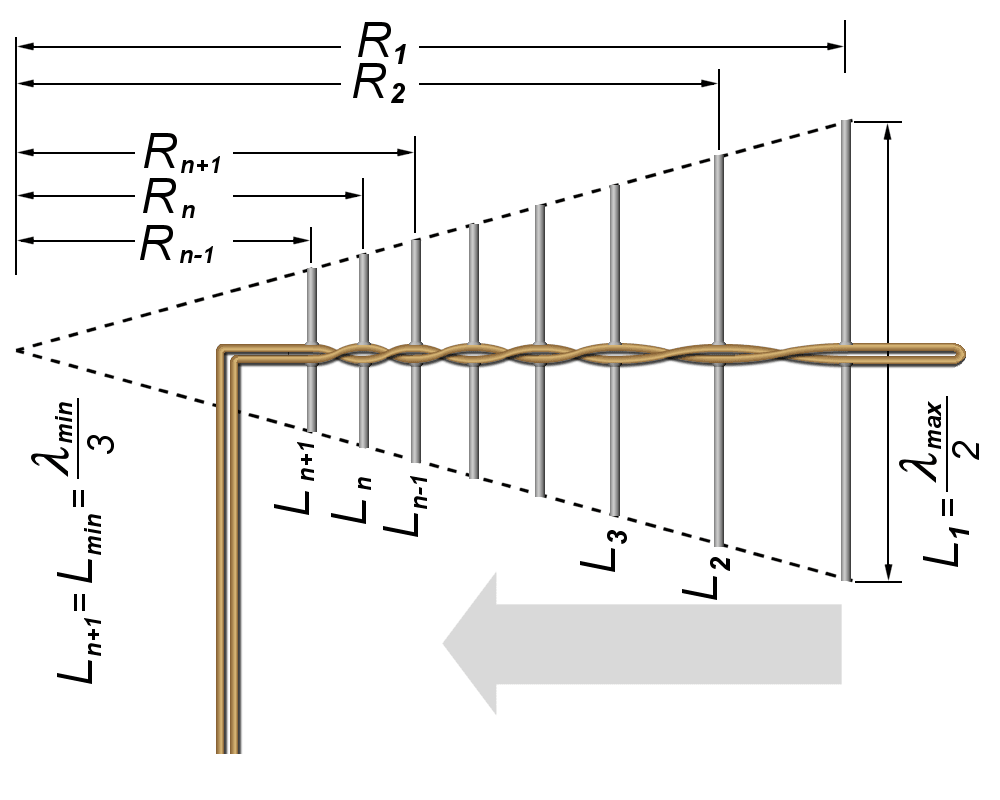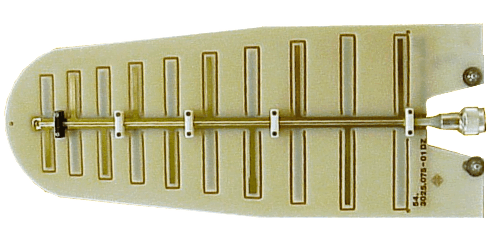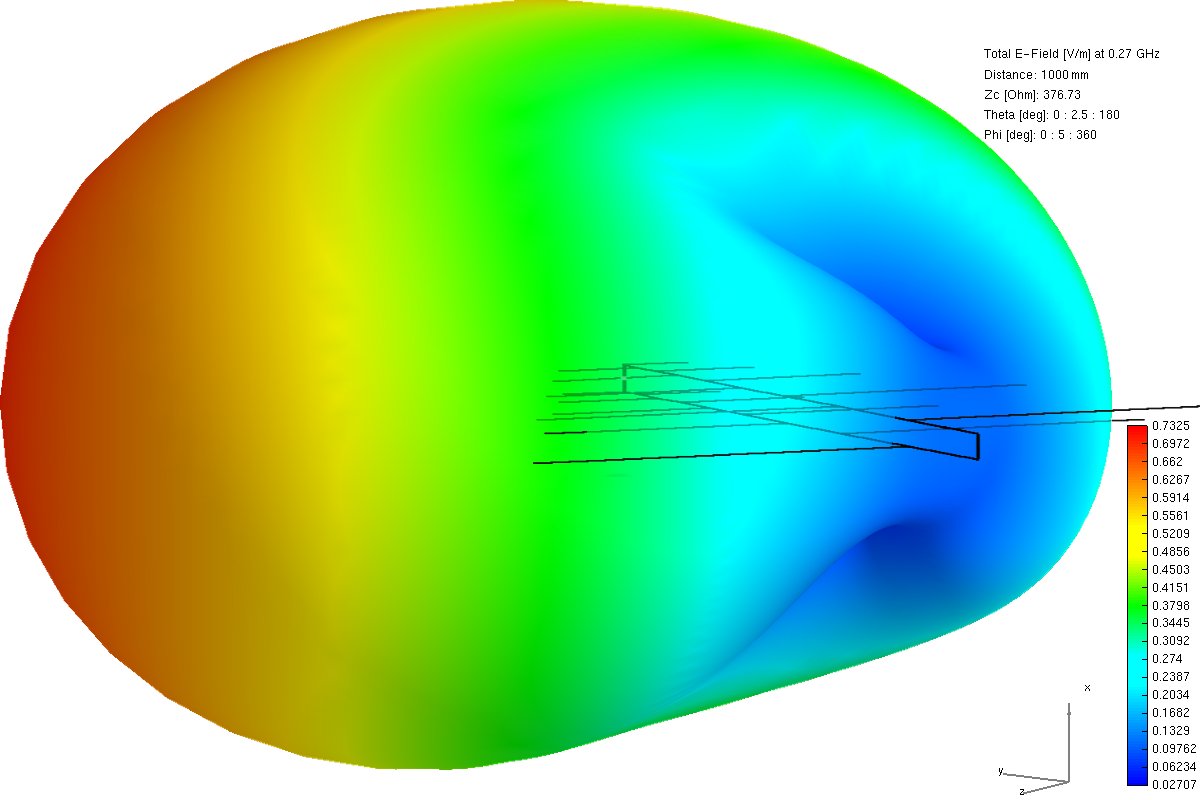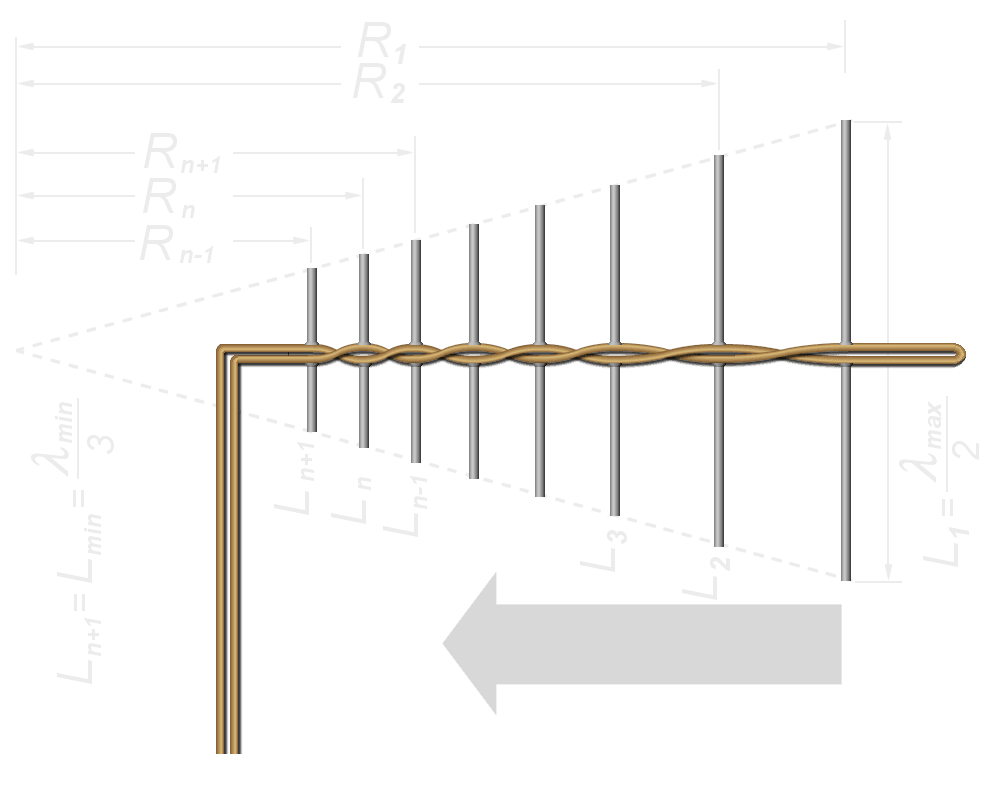Logarithmic Periodical Dipole Antenna

Figure 1: Construction of a log-periodic antenna
A log-periodic dipole antenna (LPDA) is a broadband narrow-beam antenna that has impedance and radiation characteristics that are regularly repetitive as a logarithmic function of the excitation frequency. Log periodic antennas are arrays and consist of a system of fed elements which are connected by a crossed double line with each other. In the transmitting case, at first, the wave spreads herself practically radiationless on the pathogen line. The attached and on the actual wavelength obtained far too short dipoles work merely as capacitive loading. Only if the dipoles come in the range of a third of the wavelength, the irradiation starts and several dipoles following each other are then involved in this one. This radiation active zone is limited by the dipole which approximately corresponds to the half of the wavelength. All following longer dipoles contribute nothing to the irradiation more.
The attainable gain can be up to 10 dB at a very small back lobe of up to 35 dB. The base resistance is 50 to 120 Ω depending on construction.
The electrical qualities of such antennae recur periodically with the logarithm of the frequency. These periodical fluctuations of e.g. gain and base resistance can, however, be kept so small within a period by a suitable dimensioning of the antenna that one can consider her an approximation way constantly about the regarded frequency interval.
.print.png)
.png)
(1)
- τ = scale factor
- L = radiator length
.print.png)
.png)
(2)
- R = radiator spacing

Figure 2: Foto of a small logarithmic periodical antenna for 1030 and 1060 MHz: Radiator of an IFF-Antenna

Figure 2: Foto of a small logarithmic periodical antenna for 1030 and 1060 MHz: Radiator of an IFF-Antenna

Figure 3: simulation program calculated 3D antenna pattern of an LPDA


